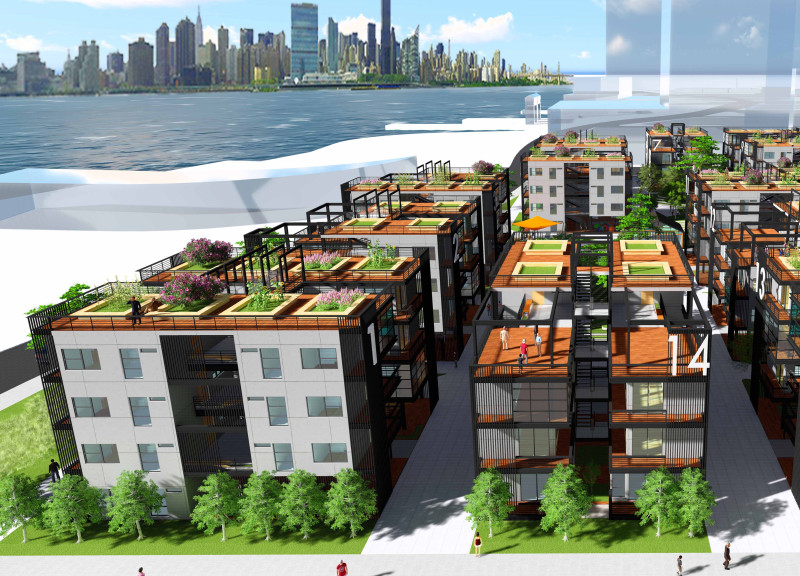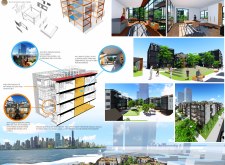5 key facts about this project
The project serves multiple functions, primarily as a residential development that integrates flexible living arrangements with spaces designated for social interaction. The architecture encourages residents to connect with each other through open communal areas designed to facilitate community gatherings and activities. These spaces are more than just physical features; they are intentional elements that promote a culture of collaboration and support among neighbors.
Key aspects of the project include the innovative arrangement of dwelling units that offer a multitude of customization options. This approach allows residents to modify their living spaces according to personal preferences and needs, contributing to a sense of ownership and belonging within the community. The architecture employs a rigid steel framing system that supports this flexibility, allowing for various unit types that can accommodate different lifestyles.
The exterior of N.Y. Commune is characterized by a combination of materials that reflect a modern yet sustainable architectural ethos. Cast-in-place concrete provides durability and serves as the project's structural backbone. The use of recycled aluminum cladding adds a contemporary visual appeal while aligning with sustainable practices. The project also incorporates composite wood decking for outdoor spaces, enhancing its integration with nature and creating inviting environments for residents to enjoy.
Natural elements play a significant role in the project’s design. Green roofs and communal gardens not only contribute to the aesthetic value of the development but also promote biodiversity and environmental well-being. These spaces are carefully integrated throughout the architectural design, ensuring that residents can easily access nature as part of their daily lives. The glazing systems utilized throughout the project maximize daylight penetration while enhancing thermal efficiency, creating comfortable living environments that reduce reliance on artificial lighting and climate control.
The unique design approaches taken in N.Y. Commune also include the strategic placement of double-height hallways that serve as social connectors within the building. This design encourages spontaneous interactions and informal gatherings, reinforcing a strong sense of community. The project emphasizes the importance of livable urban environments, where residents are not isolated in their units but are encouraged to engage with one another.
Overall, N.Y. Commune stands as an example of thoughtful urban architecture that embraces the principles of flexible living and communal cohesion. By prioritizing adaptability in design, the project responds to the diverse needs of modern urban dwellers while promoting sustainable practices and enhancing community well-being. With its focus on creating meaningful spaces for residents, this architectural project invites those interested in residential development to explore its architectural plans, sections, designs, and ideas for a more in-depth understanding of its innovative approach to living in a bustling urban environment. The details of N.Y. Commune reflect a commitment to enhancing urban life through architecture that values both individual needs and collective experiences.























